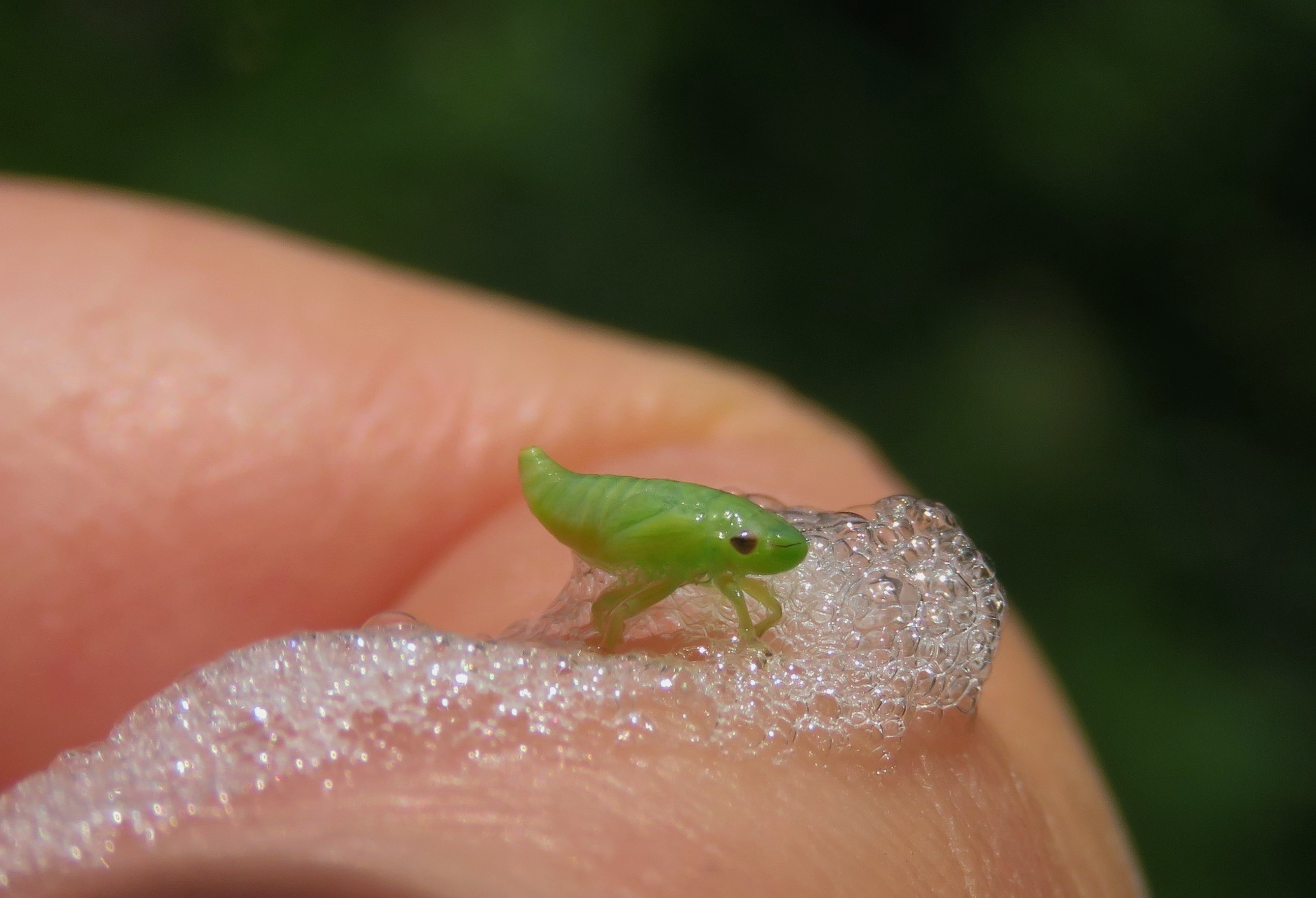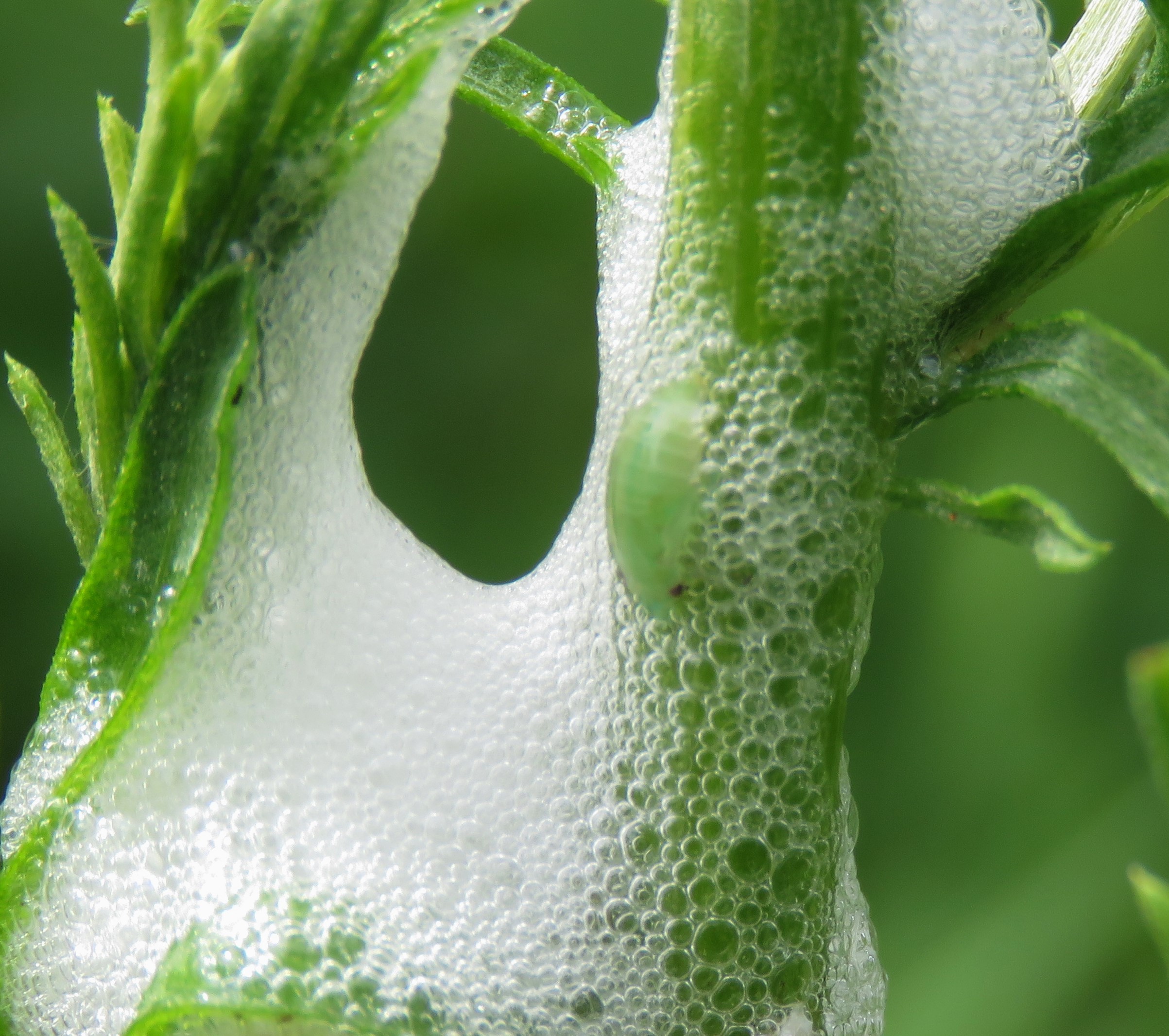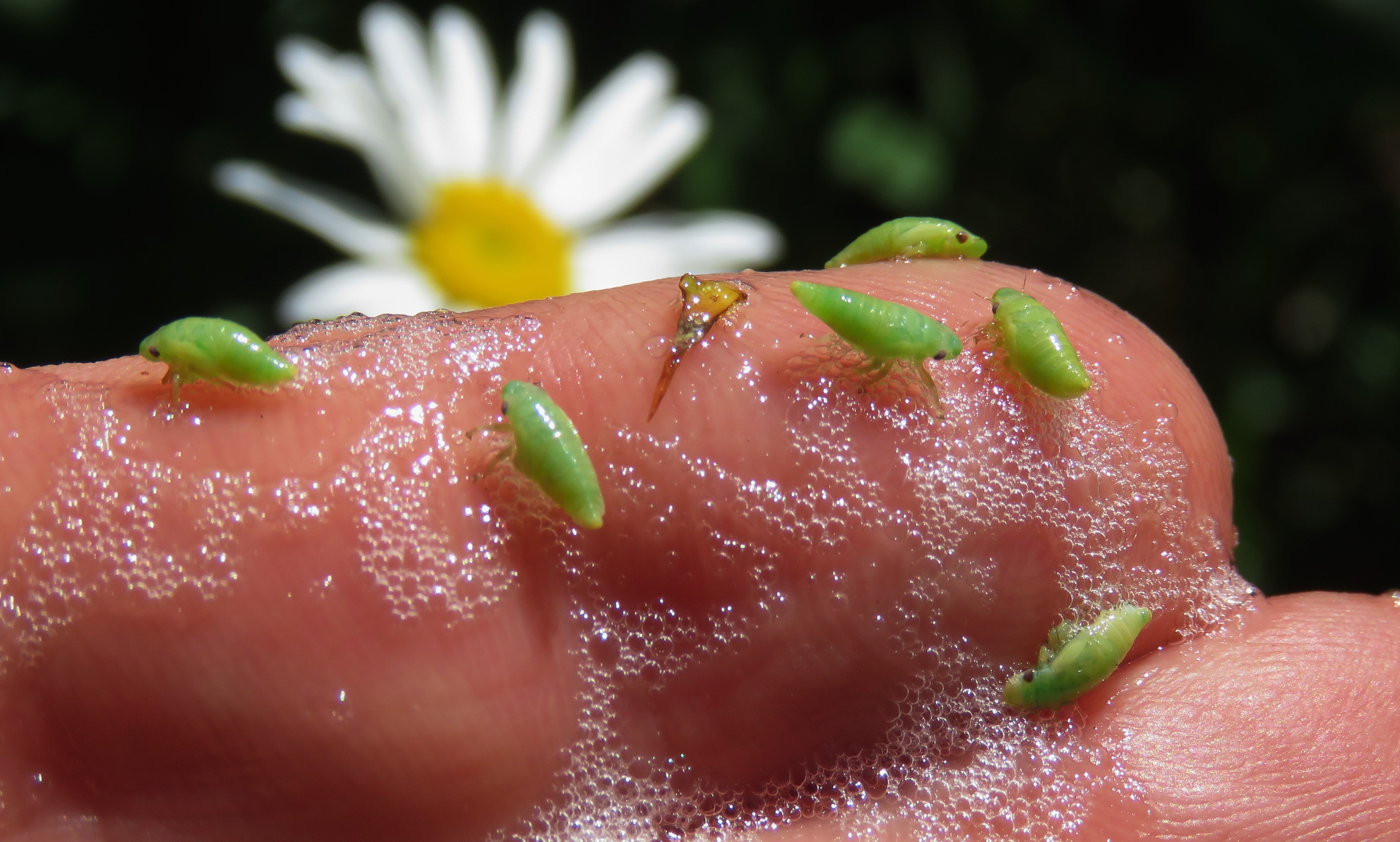Wilder Side of Oakland County
Strange frothy bubbles are appearing on the stems of meadow wildflowers and garden plantings. They shimmer in summer sunlight and appear in mass along the uncut edge zones of sun-soaked trails, including the big three trail favorites of Oakland County: Paint Creek, Polly Ann, and Clinton River. Walk the shoreline of any lake in Oakland County that has a wild weedy edge and they are nearly impossible to miss. Little kids are not shy about describing what those whitish bubbles look like, or feel like, when inquisitive young fingers explore and poke into the mysterious frothy mass.
Giggles follow the finger poke and some take delight in squealing loudly, “It looks like spit!” They are right, it does, but the details of where that froth really comes from is something I sometimes refrain from sharing with little ones on the trails. The answer would make their giggles totally uncontrollable and confused parents might cringe and say, “Really?” I’ll save the answer on the creation of the spittle for the end.
Predation has spurred the evolution of all sorts of clever survival adaptations in the world of insects and bugs. Some tiny creatures have protective armor plating, others are masters of camouflage, some can flee at fantastic speeds, and some taste bad. However, if you are a very tiny creature that’s shorter than a mosquito with none of those evasion and escape abilities, danger is rarely out of spitting distance. Concealment is the technique used by these crawling creatures that live within these frothy masses. They are created by spittlebugs, the pale green nymphs of small jumping insects known as froghoppers. They stay hidden inside their bubble bath until they are big enough to jump about. They do so by covering themselves in what scientists refer to as spittle, thus the commonly used name of spittlebug.
It took an hour of trying to get a few clear images of these tiny nymphs, for it’s not easy to get them to pose on a fingertip for close-up images. In the process of the photo shoot, I was feasted on by squadrons of mosquitoes. Several hours later on my laptop, while I was working on the images, I felt something on my ankle. A tick had found me to be a good source of nourishment while I was nearly motionless in the field of hidden spittlebugs viewing their behavior and wondering how to explain the creation of the spittle.
I also discovered something else during my photo shoot. Spittlebugs are shy of sunlight. They would walk as quickly as they could on their very tiny but relatively tall legs to reach the shady side of my finger. I also suspect that the spittlebug’s foam, not only insulates them from the heat of the day and perhaps the chill of the night cold, it serves as a natural moisturizer to protect their soft bodies.
Although a literature search mentioned each dollop of foam only houses one or two nymphs, one of my finger-poking expeditions into a large, foamy, private residence revealed almost a dozen. Dollop was a new word for me. It’s defined as a shapeless mass or blob of something. When it comes to a spittlebug home, the word dollop is absolutely perfect.
The spittle hides the growing nymphs from predatory insects; I think insect-eating birds would not be likely to slurp through the mass hunting for such tiny morsels. Most insect-eating birds of summer, such as Eastern Bluebirds, hunt by sight and swoop in when something is noted; however, it’s not possible to see what’s under the spittle.
Spoiler Alert: for the squeamish: Despite its cute and most memorable name spittlebug, the frothy ‘spit’ isn’t spit at all. Spittlebugs are well adapted at sucking the plant juices of their host plant, but it’s not just for their nourishment. I’ll word this delicately: They form the spittle by mixing air with large amounts of excess plant fluids and then through a series of strange internal muscle contractions, they quite literately blow bubbles out their back end…yes, they do.
Here’s the way it is described in a more scientific literature rather than my light and lively description. “As it voids the excess fluids from its anus, the spittlebug also secretes a sticky substance from abdominal glands. Using caudal appendages, it whips air into the mixture, giving it a foamy appearance.”
The University of Minnesota skips around what would make little kids giggle and editor’s pause for a moment with their printed words. “As the nymphs feed they pump bubbles into fluid that they excrete as a foamy substance. This frothy mass protects spittlebugs from predators and from drying out. The nymphs mature in five to eight weeks. As adults, they migrate to nearby grassy areas, pastures or areas with broadleaf weeds. The females return in September and October and lay clusters of eggs among plant debris or in leaves and stems. There is only one generation per year.”
The University has their life cycle facts right but sadly skipped over what makes this tiny bubble blowing creature so unique with such a great story to share. Take a hike this summer on the Wilder Side of Oakland County and search for spittlebugs, one of nature’s finest reminders that bugs can be fun and evolution is full of surprise.
Jonathan Schechter is the Nature Education Writer for Oakland County Government and blogs weekly about nature’s way, trails, and wildlife on the Wilder Side of Oakland County.
For the latest county news and events, visit our website and follow along using #OaklandCounty on our Facebook, Twitter, Instagram, YouTube, Pinterest, and LinkedIn pages.







As always, Jonathan writes a great nature article! Made me laugh!
Thanks Jill. And this was such a fun topic to write about.
This is very informative and well written, Jonathan. You captured them beautifully. They’ve inhabited the plants in my garden in Ann Arbor. I was just wondering what they were last night. Thank you for the article.
Just found your note Inaam. Thanks so much for writing. I think this season/summer is a very good year for the spittlebugs, I am finding them all over my meadow in northern Oakland County. They really are amazing creatures. And they won’t really do harm to your Ann Arbor garden.